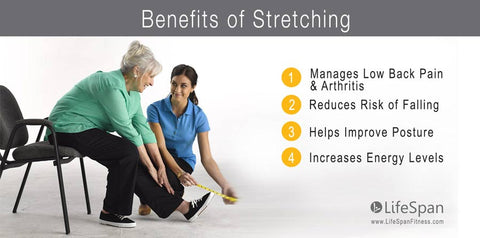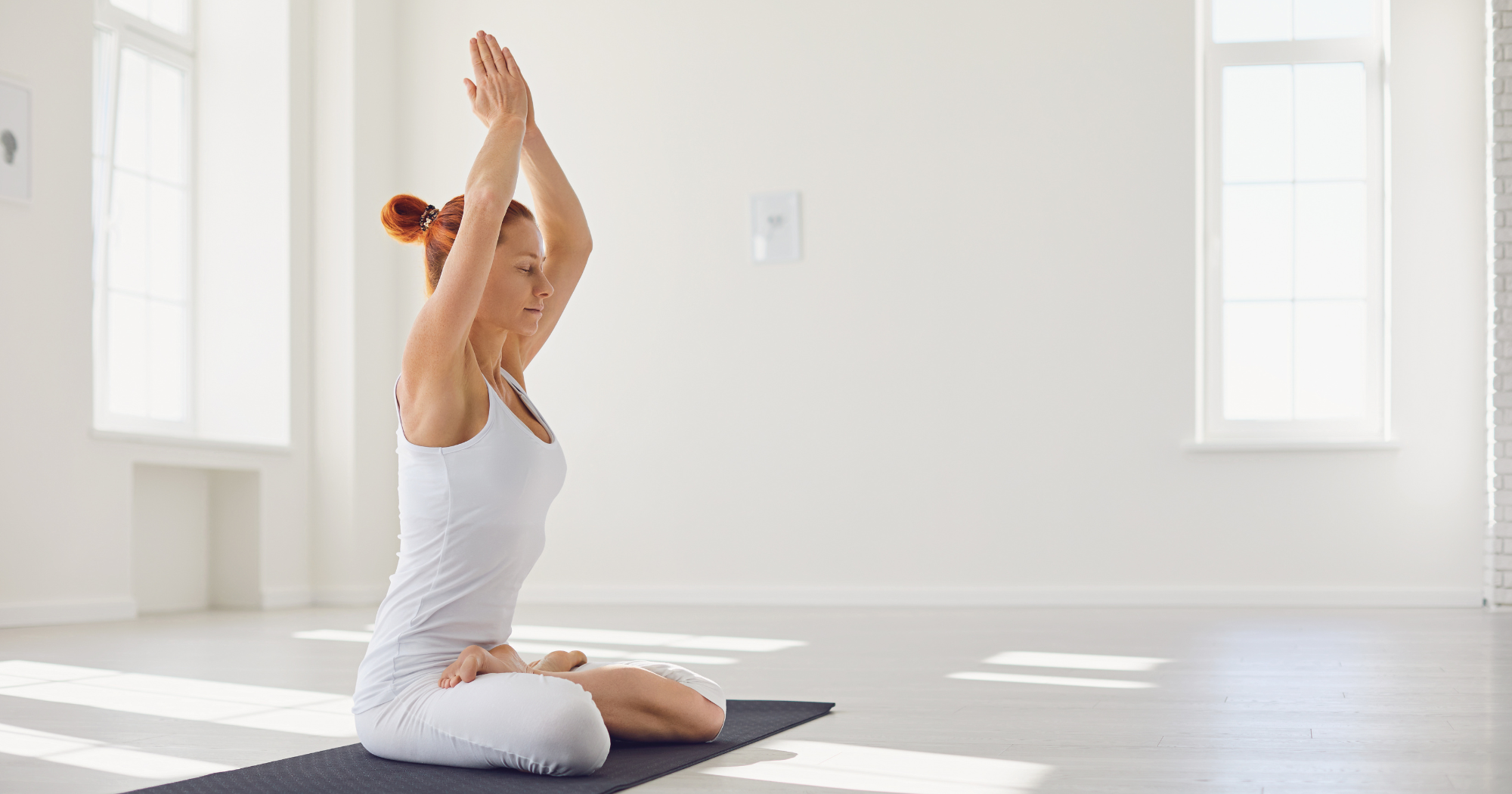For a lot of older adults, maintaining mobility can be difficult. Muscles and joints weaken and range of movement deteriorates as we age. Stretching benefits include development and maintenance of strength, improving flexibility, and increased circulation and blood flow, to provide a greater quality of life and healthy aging.

1. Stretching reduces low back pain and arthritis
The causes of lower back pain in older adults is commonly a result of osteoarthritis and spinal stenosis.
Osteoarthritis is the most common form of arthritis and is caused by the gradual degeneration of cartilage between the facet joints. Typically the resulting pain in the low back comes and goes but over time osteoarthritis may eventually cause sciatica. Along with Osteoarthritis of the low back, arthritis typically develops in the hips, knees, neck, fingers, and toes. Osteoarthritis affects 33.6% (12.4 million) of adults 65 and older.
Spinal stenosis is the narrowing of the bone channel occupied by the spinal nerves or cord. The spinal nerves become compressed and can create symptoms of sciatica – tingling, weakness, numbness in the low back, buttocks, and legs.
While both osteoarthritis and spinal stenosis are a natural part of aging and can’t directly be avoided, the resulting pain can be managed by stretching exercises. Regular stretching benefits seniors by improving flexibility, range of motion, and elasticity to relieve stiffness in the afflicted joints. Understandably it may be difficult and painful to stretch of move these joints. To help reduce the pain, it is recommended to warm up stiff muscles prior to stretching with a heat pack and conversely cool down muscles with an ice pack following exercise to minimize swelling in the joints. You may also want to consider assisted stretching by using stretching equipment or with the aid of another individual.
2. Stretching reduces the risk of falling
The risk of falling is a major concern for older adults – ages 65 and older. Each year one out of three older adults will fall, with 2.5 million individuals needing treatment in emergency facilities annually. Research as show that regular bouts of stretching are critical to balance and stability helping prevent against falls. Improving flexibility in the hamstrings, quadriceps, and the lower back along with greater mobility in the hip joint is important in the prevention of falling in older adults.
3. Stretching helps improve poor posture
As we age, our body’s water content in connective tissue, such as ligaments and tendons, decreases, resulting in reduced elasticity and flexibility. The tightening of ligaments and tendons in the chest and shoulders in conjunction with years of sitting hunched over at a desk will overtime result in poor posture. – Poor posture is defined by a forward head posture, rounded shoulders and upper back, and forward pressing hips. – The natural S-curvature in our spine compresses. This can create pain in the lower back and between the shoulder blades. Improving flexibility is simple with a consistent stretching regimen. This will help loosen tight ligaments, tendons, and muscles to give you a greater range of motion. Additionally, supplementing in senior strength training exercises along with a stretching routine will help balance out weaker muscles helping correct poor posture with the benefits of flexibility.
4. Stretching increases blood flow and energy levels
Dynamic stretching is a low-intensity form of stretching that utilizes movement to stretch your muscles. As opposed to static stretching, which is stretching while your body is devoid of motion. Along with lengthening your muscles, dynamic stretches will also increase circulation and nutrient flow throughout the body. Thus increasing the body’s energy levels. In older adults, increased energy is important in maintaining independence, remaining social, and overall healthy aging.
Examples of dynamic stretches are:
- Arm swings
- Shoulder circles
- Lunges
- Leg swings
- Half squats
Additional Senior Exercises
While regular stretching is a great way to help manage low back pain and arthritis, improve posture, reduce falls, and increase energy levels, there are additional exercises that will aid in healthy aging. Exercises such as:
- Tai chi
- Pilates
- Water therapy
- Yoga
- Walking
You may also want to consider using an activity monitor or a senior exercise video to help keep you motivated.

 (4.7/5)
(4.7/5)



